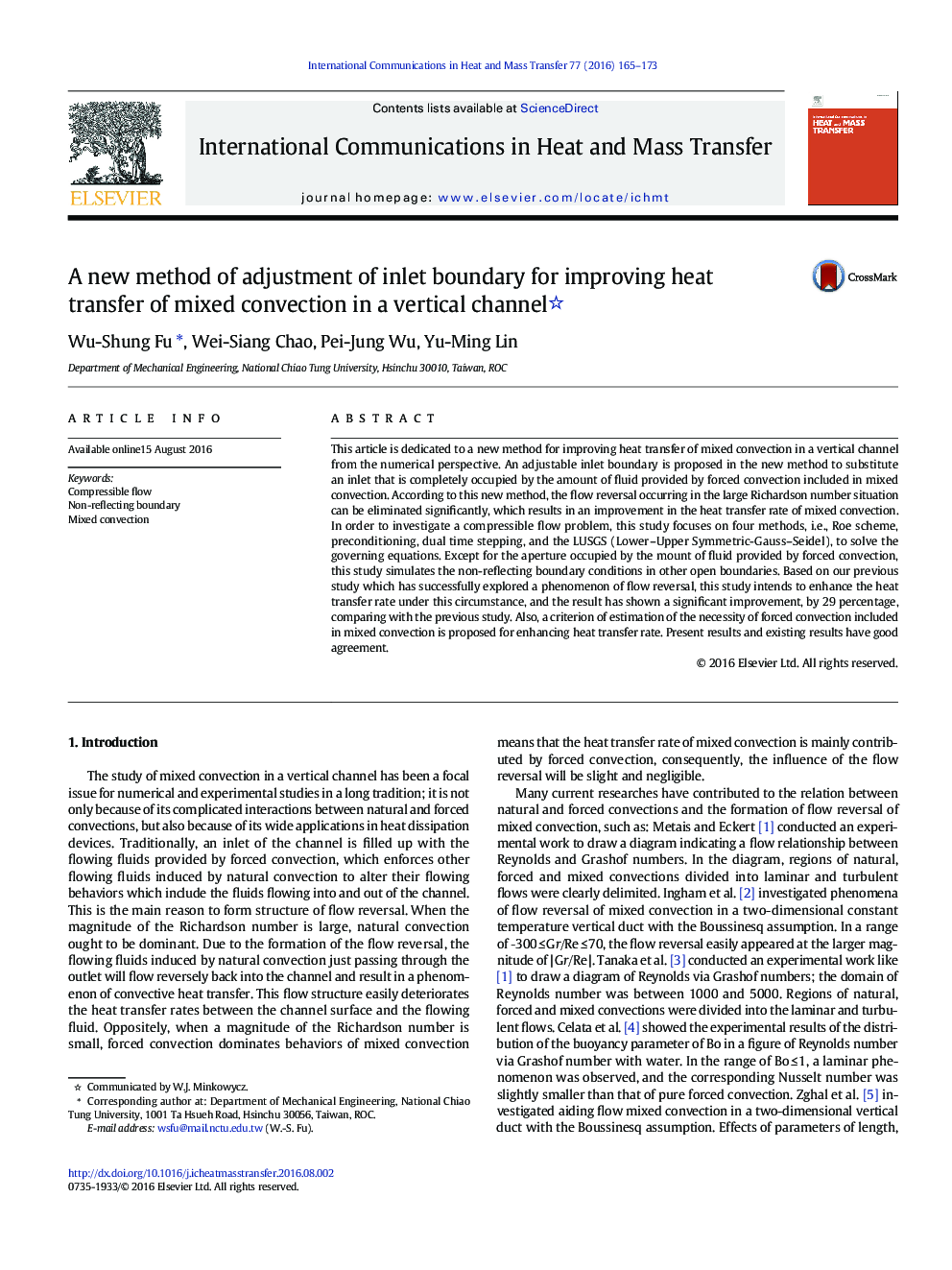| Article ID | Journal | Published Year | Pages | File Type |
|---|---|---|---|---|
| 652831 | International Communications in Heat and Mass Transfer | 2016 | 9 Pages |
This article is dedicated to a new method for improving heat transfer of mixed convection in a vertical channel from the numerical perspective. An adjustable inlet boundary is proposed in the new method to substitute an inlet that is completely occupied by the amount of fluid provided by forced convection included in mixed convection. According to this new method, the flow reversal occurring in the large Richardson number situation can be eliminated significantly, which results in an improvement in the heat transfer rate of mixed convection. In order to investigate a compressible flow problem, this study focuses on four methods, i.e., Roe scheme, preconditioning, dual time stepping, and the LUSGS (Lower–Upper Symmetric-Gauss–Seidel), to solve the governing equations. Except for the aperture occupied by the mount of fluid provided by forced convection, this study simulates the non-reflecting boundary conditions in other open boundaries. Based on our previous study which has successfully explored a phenomenon of flow reversal, this study intends to enhance the heat transfer rate under this circumstance, and the result has shown a significant improvement, by 29 percentage, comparing with the previous study. Also, a criterion of estimation of the necessity of forced convection included in mixed convection is proposed for enhancing heat transfer rate. Present results and existing results have good agreement.
